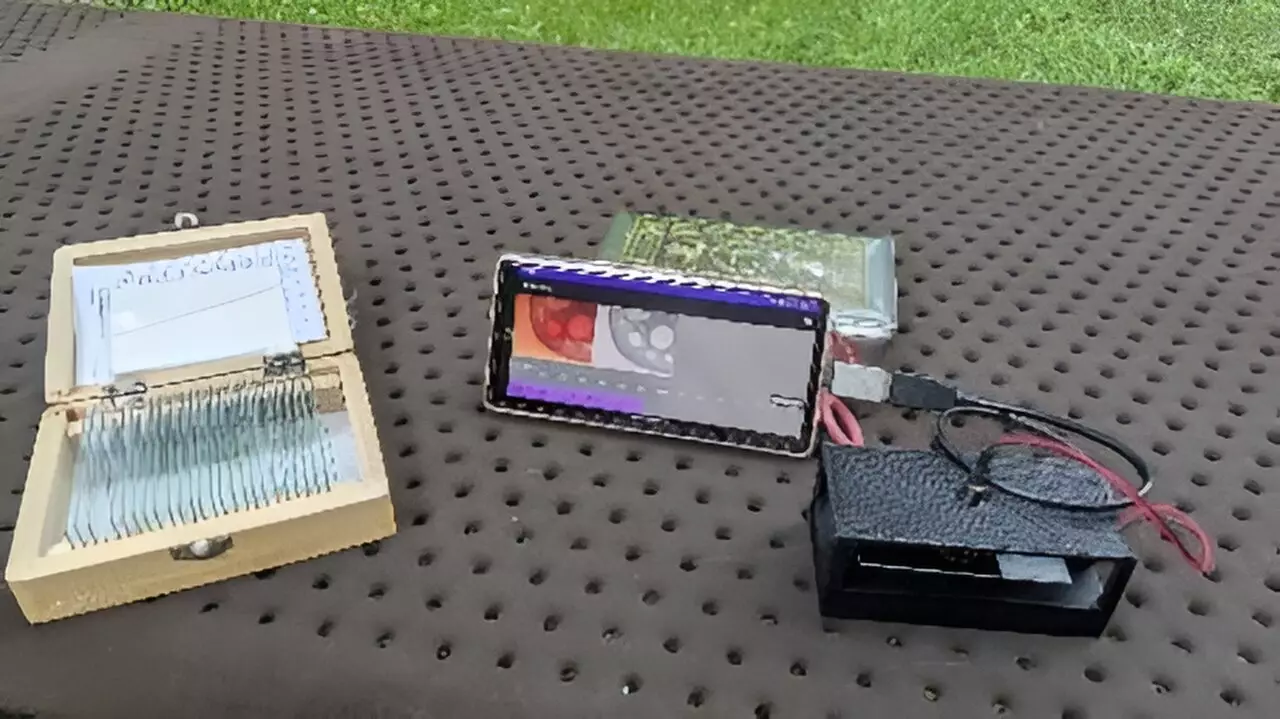In recent years, advancements in microscopy have propelled numerous scientific and medical fields into new realms of possibility. Among the most significant innovations is the development of a smartphone-based digital holographic microscope that promises to enhance three-dimensional (3D) measurement capabilities. This technology is not only portable but also cost-effective, potentially democratizing access to sophisticated imaging tools across various sectors, from education to healthcare in underserved areas.
Understanding Digital Holographic Microscopy
Digital holographic microscopy represents a significant leap forward in optical technology, allowing scientists to capture detailed 3D data from biological and material samples. Traditional digital holographic microscopes rely heavily on complex optical systems bolstered by high-performance computers for processing. This reliance limits their usage in fieldwork or locations where access to sophisticated computational resources is impractical, making the technology less accessible to a broader audience.
The principal mechanism of digital holographic microscopy lies in its ability to record the interference patterns formed between a reference beam and the light scattered from the object being examined. By digitally reconstructing these holograms, this type of microscopy can unveil detailed insights into both the surface and internal structures of samples. The surface measurements obtained are precise enough for diverse applications, including intricate biomedical diagnostics.
Portability and Affordability: A Game Changer
The newly developed smartphone-based digital holographic microscope addresses the limitations of traditional systems head-on. Led by Yuki Nagahama from the Tokyo University of Agriculture and Technology, this innovation integrates a simple optical design, which can be constructed using a 3D printer. This strategy not only minimizes production costs but also enhances portability, making it easier to transport and deploy in various environments.
This breakthrough turns smartphones into capable computing devices for real-time holographic reconstruction. By utilizing band-limited double-step Fresnel diffraction, the researchers harnessed a technique that curtails data point requirements while ensuring rapid image processing. Such efficiency is crucial, especially in scenarios where time-sensitive data is vital, such as in clinical diagnostics.
The implications of this technology are vast. In medical settings, for instance, it could prove invaluable in diagnosing diseases like sickle cell anemia, particularly in developing nations where access to advanced medical equipment is severely limited. The portability of this microscope means it can be used in remote locations, facilitating timely medical responses and improving patient outcomes.
Beyond healthcare, the educational potential is equally promising. With affordable access to high-quality imaging tools, students can engage with complex biological concepts through hands-on experience, whether at school or home. This kind of experiential learning could ignite interest in science and technology among younger generations, leading to a more scientifically literate populace.
While the smartphone-based holographic microscope exhibits remarkable capabilities, challenges still exist in ensuring the accuracy and quality of the images produced. The researchers are currently exploring the potential of deep learning algorithms to enhance the output quality further. This is particularly important as holographic microscopes can sometimes produce unintended artifacts during image reconstruction. By integrating machine learning, the aim is to refine the image quality, making it suitable for both diagnostic purposes and scientific research.
Another challenge is adapting the system to work efficiently across various smartphone models and their differing specifications. Continuous development will be necessary to ensure compatibility and optimized performance across different devices, thereby broadening the accessibility of this revolutionary tool.
The introduction of a smartphone-based digital holographic microscope heralds a new chapter in the fields of microscopy, healthcare, and education. By democratizing advanced imaging technologies, this portable and affordable solution stands to amplify scientific understanding and medical capabilities across the globe. As researchers continue to refine and enhance its functionalities, the potential applications seem boundless, paving the way for future innovations in how we observe and analyze the world around us. The journey of elevating healthcare and education through accessible technology is just beginning, and the impact of this digital revolution could be profound.


Leave a Reply